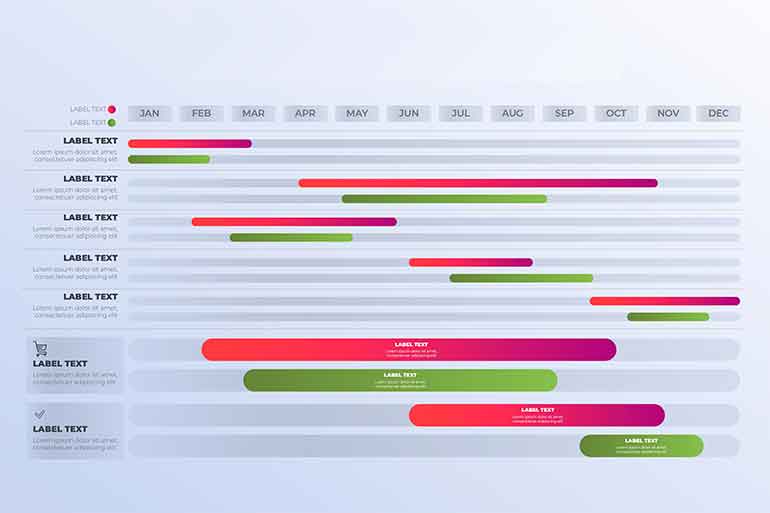Why You Should Use A Gantt Chart For Your Project
Running a project is never easy, especially when there are so many moving parts that you have to keep an eye on and manage. Fortunately for the project managers of today, there is a wealth of project management tools available to them that can help make their lives easier. One of those tools is the Gantt chart, which, believe it or not, has been around for more than a century. The Gantt chart has since become one of the most prominent project management tools today, and rightly so. If you’re at the helm of a project and you haven’t used a Gantt chart just yet, here are several reasons why you should.

Running a project is never easy, especially when there are so many moving parts that you have to keep an eye on and manage.
Fortunately for the project managers of today, there is a wealth of project management tools available to them that can help make their lives easier.
One of those tools is the Gantt chart, which, believe it or not, has been around for more than a century.
It was first developed in the 1890s by Polish engineer Karol Adamiecki as the Harmonogram, which then evolved sometime later into the Gantt chart as we know it today, courtesy of its namesake, American engineer Henry Gantt.
The Gantt chart has since become one of the most prominent project management tools today, and rightly so.
If you’re at the helm of a project and you haven’t used a Gantt chart just yet, here are several reasons why you should.
It Makes Your Project Easier to Visualize
As mentioned earlier, a project has many moving parts, including the order of tasks, the team members responsible for them, and their start-to-end dates, among others.
With a Gantt chart, you get to see them all in one place. Gantt charts can conveniently display all the critical information about the project. Whether it’s task dependencies, resource allocations, or the project’s progress, a Gantt chart will give you an overview of everything related to it to help you manage the whole thing more efficiently.
It Shows Which Tasks Are Dependent On Each Other
The visual information displayed on a Gantt chart shows which team members are responsible for which tasks, and how they’re related to each other.
It’s typical for any given project to have tasks that depend on the completion of other tasks before they can start.
With the information provided by an Excel Gantt chart with dependencies, you can assign equal responsibilities among the members of the team and set schedules for their tasks in a way that ensures a smooth workflow for everyone.
For people collaborating on a project, a Gantt chart that indicates who is doing what also lowers the risk of misunderstandings about their roles. The clear delineation of tasks helps them understand how the ones assigned to them are related to that of others, and vice versa. They should then be able to work in harmony to achieve the goals set for the project.
It Improves Communication
A Gantt chart does more than make tracking your project easier. The complete picture that it provides about your project improves communication among different teams, too.
With everyone on the project treating a single Gantt chart as their sole source of information, they can communicate its progress to each other more easily. If anything, it reduces the likelihood of any confusion among different teams on things that need to be done since they’re looking at the exact same document.
It Fosters Transparency
The progress of a project is displayed clearly in a well-maintained Gantt chart. Every aspect of your project will be transparent to everyone, from possible budget shortfalls to team members either excelling or falling behind on their work.
Such transparency allows management and concerned team members to take action. When faced with a shortage of resources, a project manager can work immediately to maximize whatever is left or find new ones. If certain team members are struggling to hit their goals, the others can exhibit a heightened sense of teamwork and help them to ensure a smoother flow to the operation.
It Improves Time Management
With a Gantt chart providing everyone with a consolidated view of the project’s overall progress, each team member will likely become more adept at time management.
As each task on a Gantt chart has clear start-to-end dates, it impresses upon everyone that time is of the essence. Everyone will get the message that delays will have an adverse effect on the project. They will allocate the right amount of time to finish essential tasks at hand on or before their due dates.
A Gantt chart is by no means a perfect project management tool. It also has its flaws, like the fact that it takes a huge chunk of time to prepare one. However, you simply can’t ignore its benefits, and the ones listed above are just a few of them.
Give the Gantt chart a try now and see for yourself how easier things are going to be while you’re running your project.

